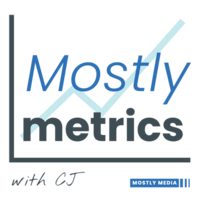👋 Hi, it’s CJ Gustafson and welcome to Mostly Metrics, my weekly newsletter where I unpack how the world’s best CFOs and business experts use metrics to make better decisions.
This post kicks off a three-part series on perfecting your Board Materials - whether you’re the one presenting or the “person behind the curtain” building the deck.
Here’s the roadmap:
Part I: The Art of the Pre-Read
Part II: The Metrics That Matter
Part III: The Executive Reporting Checklist
By the end, you’ll have a toolkit for crafting reports that pair compelling visuals with sharp narratives for your Board.
Now, let’s death wrestle some ogres. I mean, write some documents.

The Art of the Pre-Read
Contrary to popular belief, most of a board meeting actually happens before the actual meeting. Today we’ll answer the following key questions:
How far ahead of time should I send the materials?
What should be in the pre-read materials?
Should I send supporting excel models?
Should I individually walk each person through the materials beforehand?
How far before should I sent materials?
Somewhere between 48 hours and 72 hours before. If you send it more than 72 hours before, you give people too much time to dissect and pick apart the numbers. It invites over analysis. Yes, you want them informed, but you don’t want them rebuilding Il Duomo and requesting an accrual schedule from seven quarters ago.
And anything less than 48 hours doesn’t account for the busy lives, and hectic travel schedules, your board members have. Unfortunately, most teams drop a fat deck on the board the night before. As a result, bleary eyed and rushing, board members review whatever they can over breakfast in the Marriott lobby the morning of.
While you may think this is advantageous to you, as an operator, since it maximizes the amount of time you have to make changes, while minimizing the time they have to really “sink their teeth in”, you aren’t doing yourself any favors.
Why?
What I’ve found is that any work done on a board deck in the last 24 hours usually ends up as an appendix slide anyway. If you’re doing your job half right, there’s no way you’ve left the meat and potatoes of the presentation to literally right before show time.
Plus, it feels good to hit send and actually relax before the meeting. If you’re mired in creating slideware, you probably aren’t thinking strategically about the higher level conversations that need to happen. This isn’t a book report that you can pass in at the 11th hour and sign off. You still need to be mentally prepared to show up and discuss (potentially even defend?) what’s in the deck.
Don’t mistake the deck with the actual show.
And by sitting on the deck you put your board members in a bad spot. You don’t want them leaving the meeting saying “that was a death march through slides I hadn’t had a chance to absorb.” While you may mistakenly celebrate over beers with your CEO afterwards that you made it through another quarter without any tough questions or divisive discussions, it was merely a Pyrrhic victory where you survived the battle but made no progress in the war to become a better company. In fact, if you’re just trying to dribble out the clock, and sending the deck late is a way to chew up some seconds, you probably have bigger issues on your hands when it comes to board dynamics.
What should be in the pre-read materials?
This is one of the more controversial topics when it comes to board prep.
(I did the work for you - Board material templates for paid readers to copy below)
Subscribe to our premium content to read the rest.
Become a paying subscriber to get access to this post and other subscriber-only content.
UpgradeYour subscription unlocks:
- In-depth “how to” playbooks trusted by the most successful CFOs in the world
- Exclusive access to our private company financial benchmarks
- Support a writer sharing +30,000 hours of on-the-job insights

